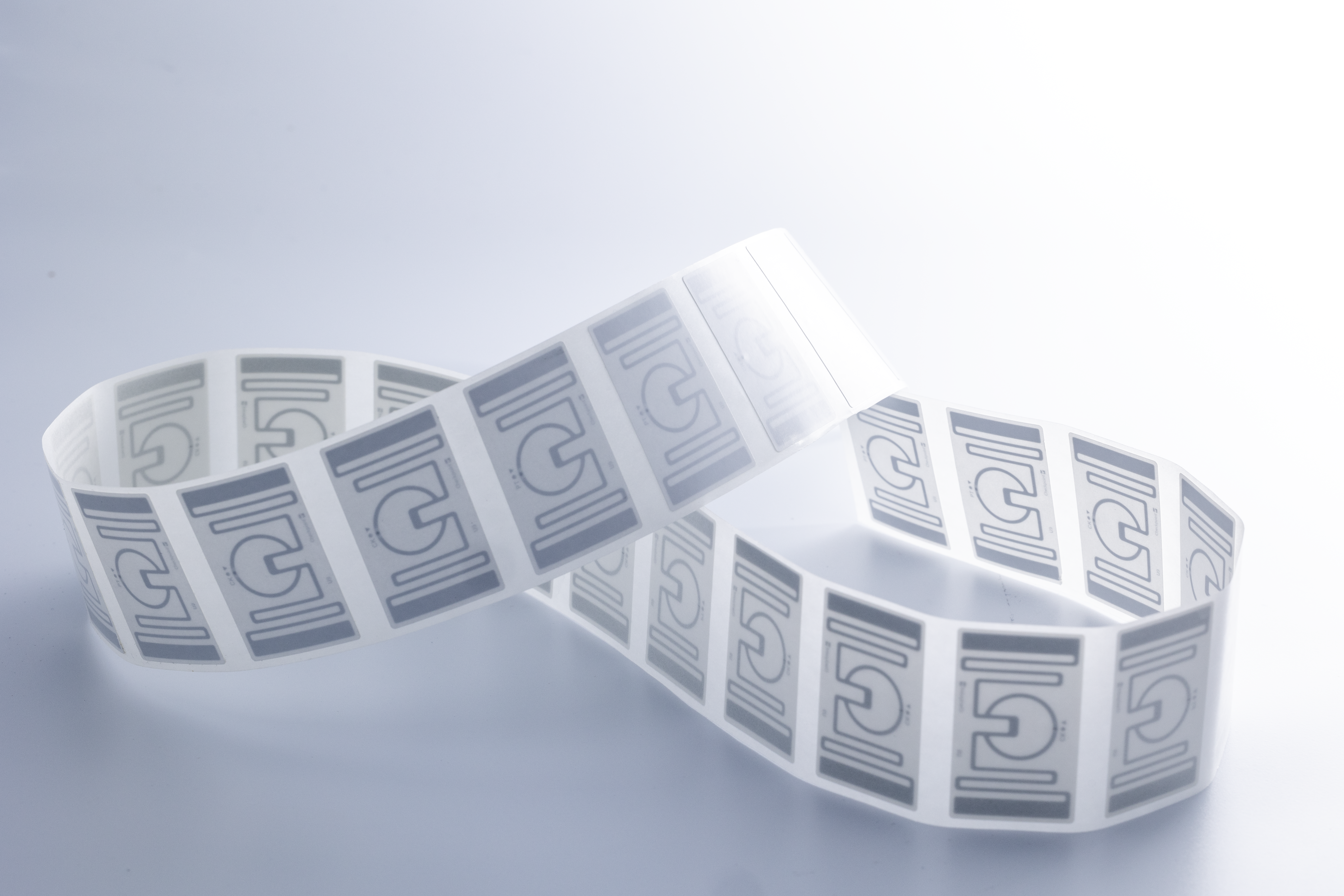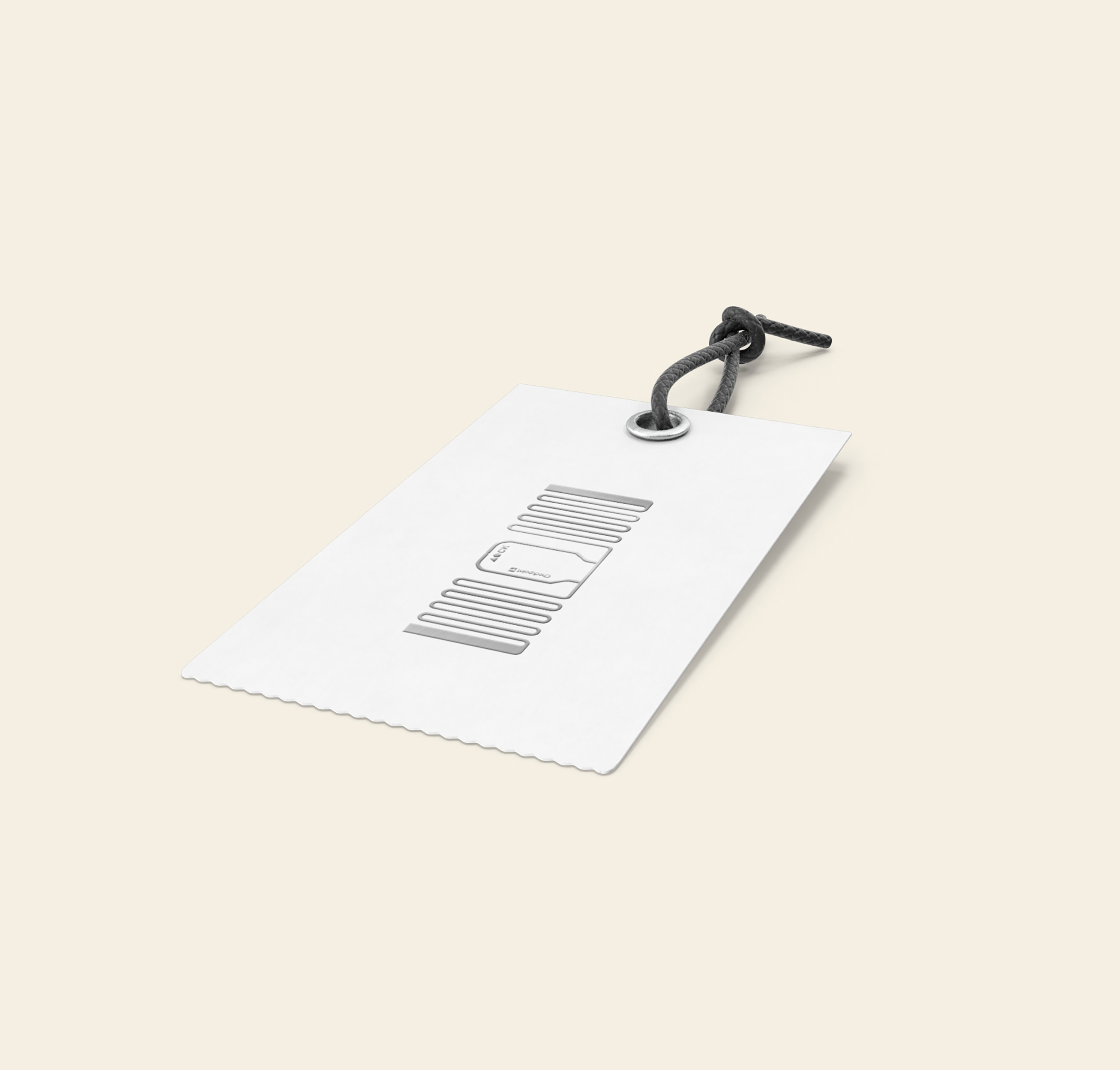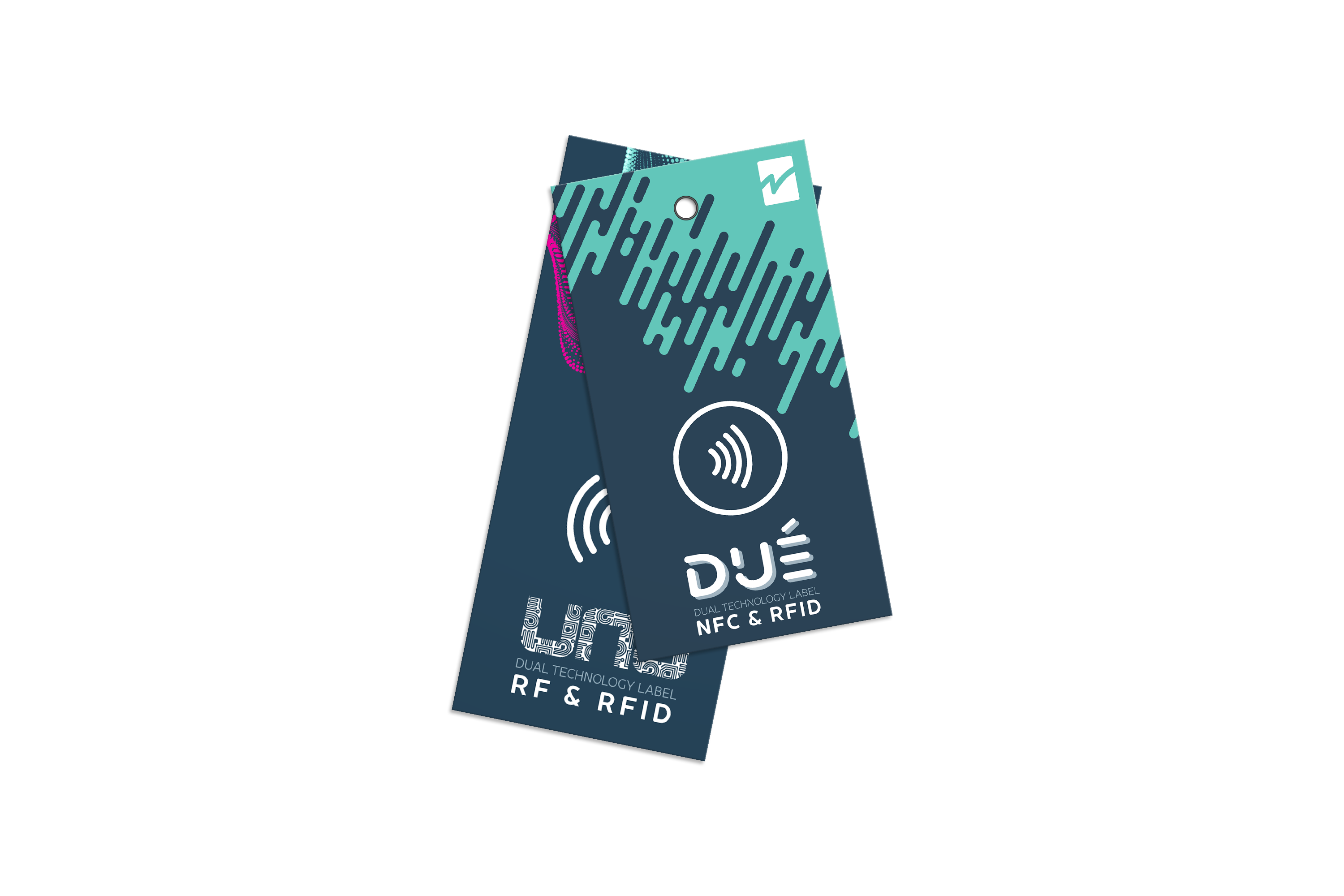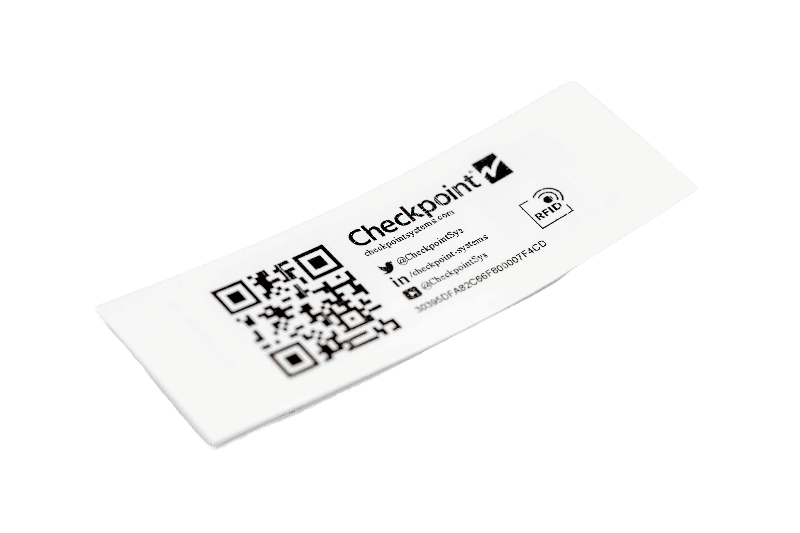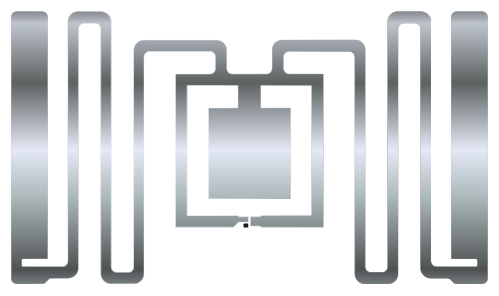Inside an RFID label: explore the 3 main RFID components and how they work
Do you know your way around an RFID inlay? This quick, 3-minute read will set you on the right path.
Radio-frequency identification (RFID) is a wireless communication technology that can store, send, and receive information. Our experts walk you through the three main components of an RFID inlay so you can easily learn more about the tech and how it works.
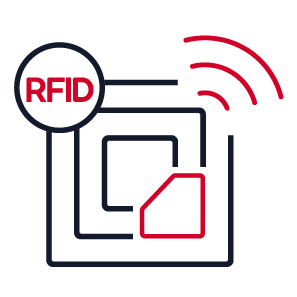
RFID tag explained: what’s inside an RFID label?
The following three RFID components come together to form what we'd call an 'RFID inlay,' a super slim piece of technology that can be inserted into garments, stickers, or labels.
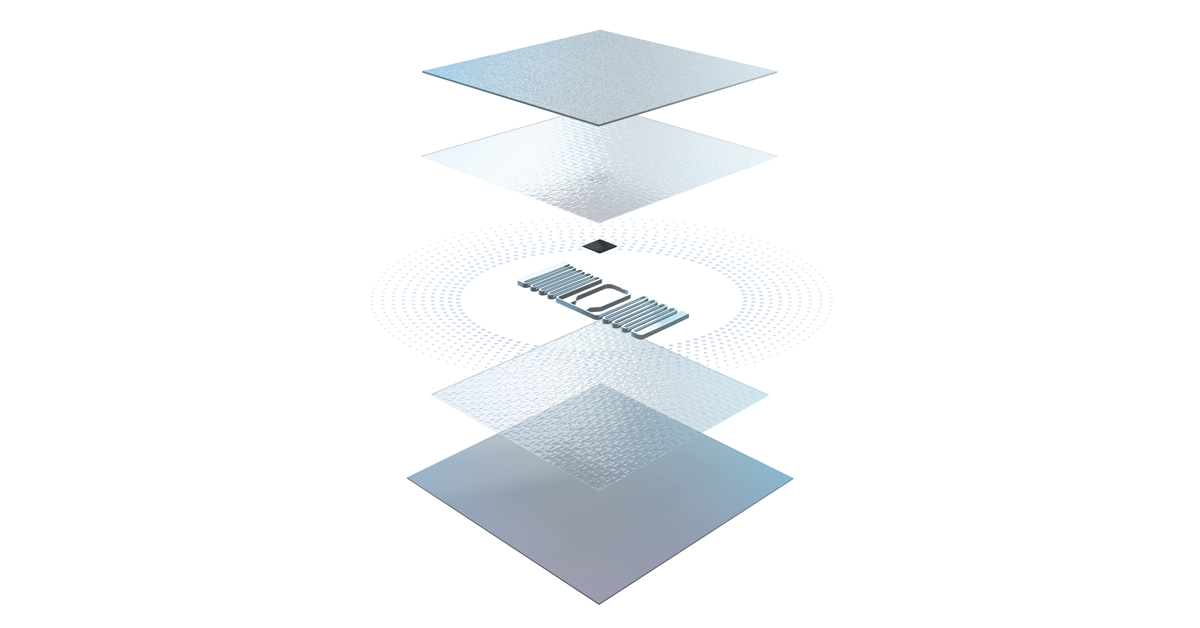
Microchip
- RFID chips are tiny electronic devices usually made of silicon.
- They have a small amount of memory, which is used to encode the chip with unique product information. The chip’s memory also stores information like purchase history and the product’s movements through the supply chain.
- The most common RFID chips are ‘passive,’ which means they don’t have a power source. They activate when scanned by a ‘reader’ (like a handheld scanner) which sends a small amount of energy through the chip via the antenna.
- We work with different chip suppliers to design and manufacture labels to suit specific use cases. These include dual technology chips, like our DUÉ Mini Labels, which combine UHF RFID chips with NFC chips for smartphone interactivity. Our UNO Labels use RFID with an RF chip for enhanced loss prevention. That means double the functionality and double the ROI in a single inlay.
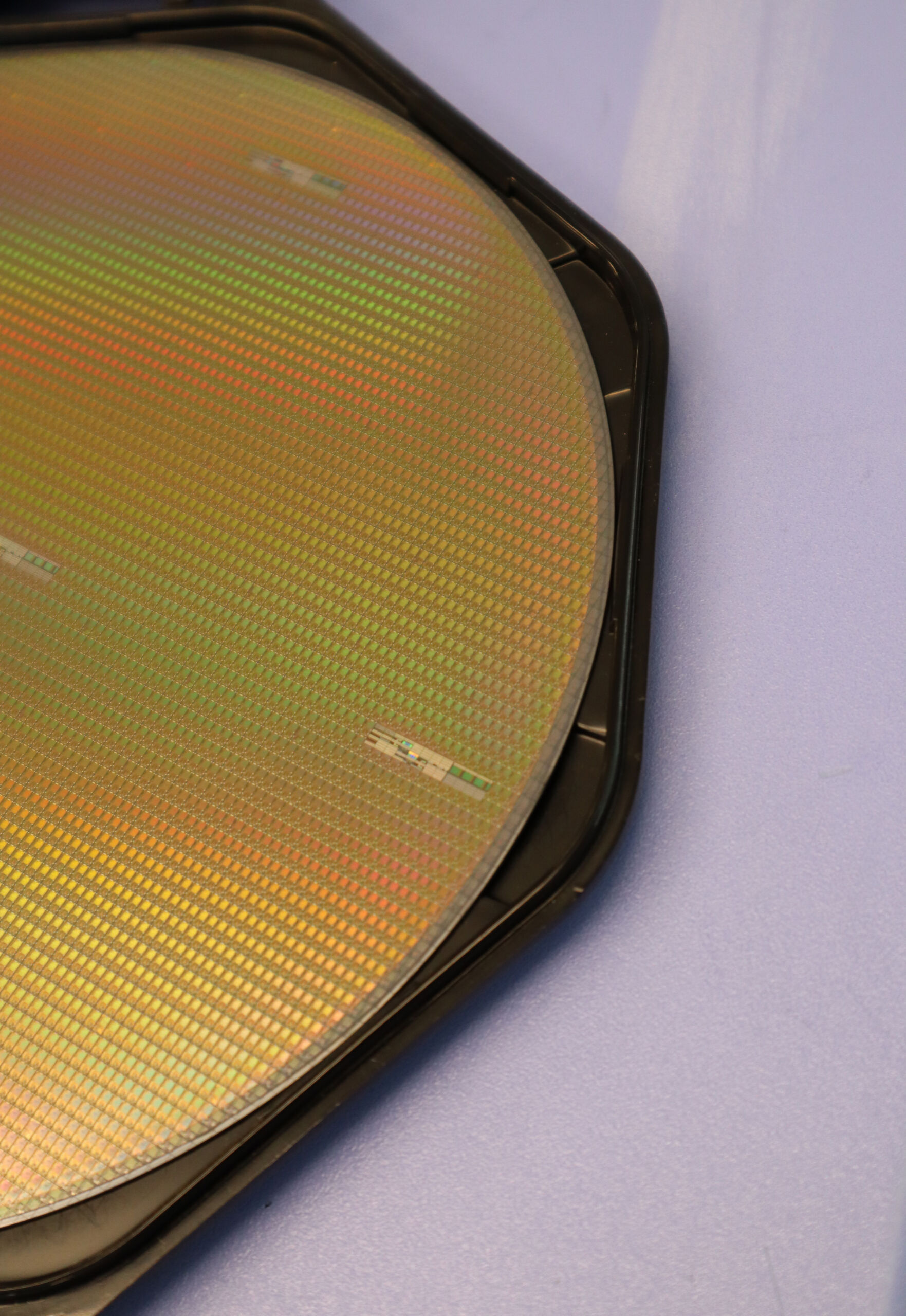
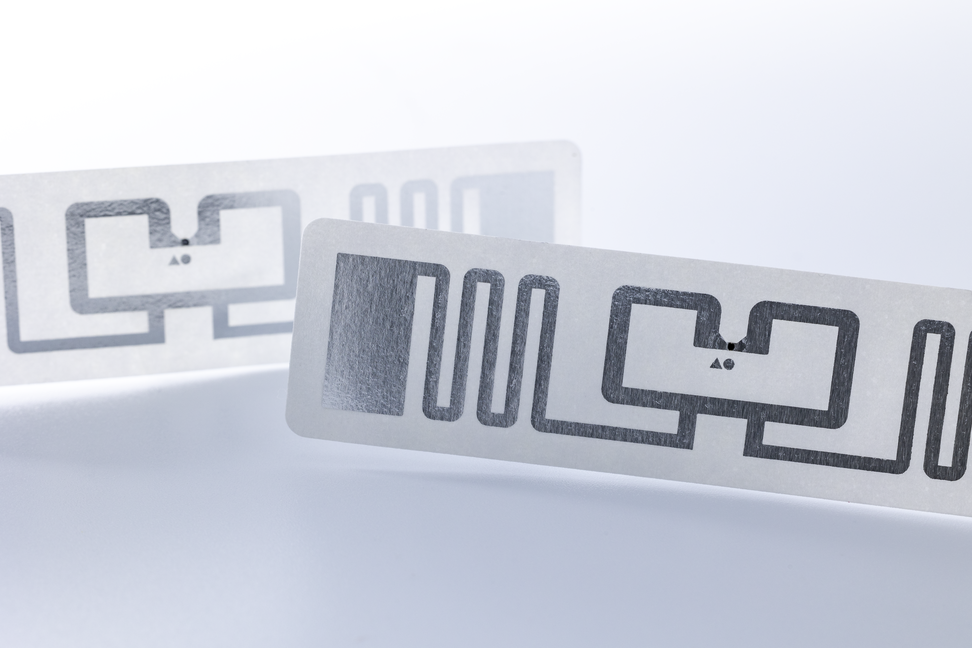
Antenna
- RFID antennas are the distinctive coiled or looped section of the inlay.
- Antennas are usually made of conductive materials like copper or aluminum. They can also be printed onto your label or inlay using conductive ink.
- Radio waves activate the antenna from a reader (AKA scanner). It responds by pinging the chip's info back to the reader.
- Without the antenna, the RFID chip has no power, and its stored info can’t be accessed or updated.
- The more coils or turns an antenna has, the further it can transmit! That means bigger RFID inlays can be read farther away than super small ones. If you want a large reach but a discrete RFID inlay, we’d recommend pocket tags, which can be larger because they’re hidden inside the garment itself.
Substrate
- ‘Substrate’ is just a fancy name for the material the antenna and chip are mounted on. It provides a surface and structure for the RFID chip and antenna.
- RFID inlay substrates can be paper, plastic, or fabric. The substrate you choose depends on the use case and what you want the inlay to do.
- The two most common RFID inlay substrates are PET and PVC because they’re so durable and flexible.
